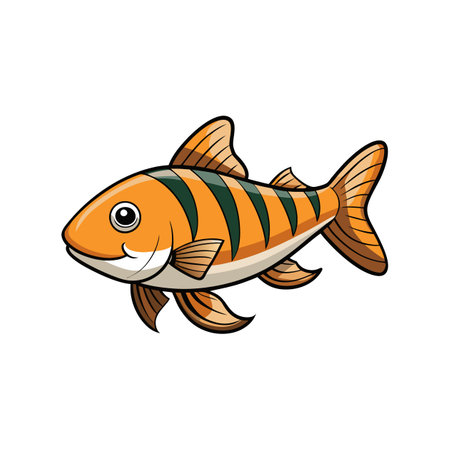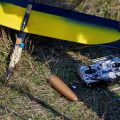Introduction to Fish Health in Indian Aquaculture
India is renowned as a global leader in freshwater aquaculture, and the trio of Rohu (Labeo rohita), Catla (Catla catla), and Mrigal (Cirrhinus mrigala) are at the heart of this thriving industry. These three species, popularly referred to as Indian Major Carps, have been cultured for centuries in both traditional earthen ponds and, more recently, modern intensive systems across the length and breadth of Bharat. Their popularity stems from their adaptability to local conditions, high growth rates, palatable flesh, and strong market demand among Indian consumers from Kolkata to Kochi. In both rural and urban settings, fish farmers rely on these species not only for economic returns but also as a vital source of protein for millions of families.
However, as farming practices evolve from conventional polyculture in village tanks to advanced methods like biofloc or recirculatory aquaculture systems (RAS), new challenges are emerging—especially concerning fish health management. Robust health management practices are now recognized as essential for sustainable aquaculture, ensuring consistent yields while minimizing losses due to disease outbreaks. With increased stocking densities and changing water quality parameters in modern systems, the risk of infectious diseases and stress-related disorders has risen manifold. Effective health management—combining indigenous knowledge with scientific advancements—has thus become the backbone of successful Rohu, Catla, and Mrigal culture in India today.
Common Diseases and Challenges in Desi Fish Farming
In the Indian aquaculture scene, especially among rural and semi-urban fish farmers, Rohu (Labeo rohita), Catla (Catla catla), and Mrigal (Cirrhinus mrigala) are considered as the backbone of inland fisheries. However, these species are often threatened by various diseases that can lead to significant economic losses. Here, we highlight the most common diseases observed in desi fish farming, sharing real-world experiences from local Indian communities.
Prevalent Diseases Affecting Rohu, Catla, and Mrigal
| Disease Name | Affected Species | Symptoms Noticed by Farmers | Local Farmer’s Experience |
|---|---|---|---|
| Bacterial Gill Disease | Rohu, Catla | Laboured breathing, pale gills, reduced feeding | Farmer Ramesh from West Bengal reported sudden fish deaths after monsoon due to water quality changes, with gills appearing slimy and pale. |
| Epizootic Ulcerative Syndrome (EUS) | Rohu, Mrigal | Red ulcers on body, frayed fins, lethargy | Saritha aunty from Andhra Pradesh noticed ulcers during winter months; she managed by removing infected fish and using potassium permanganate bath. |
| Argulosis (Fish Lice Infestation) | All three species | Visible lice on skin and fins, erratic swimming, scratching against surfaces | Kiran bhai from Gujarat saw his Catla jumping out of water repeatedly; upon closer inspection, he found tiny lice attached to their bodies. |
| Saprolegniasis (Fungal Infection) | Mrigal, Rohu | Cotton-like growth on skin/fins, loss of appetite | Lakshmi from Odisha struggled with fungal patches post-handling during harvest season—she now ensures proper handling and salt treatment baths. |
| Columnaris Disease | Catla, Rohu | Mouth rot, white lesions on body/fins, rapid mortality in fingerlings | Pandey ji from Uttar Pradesh lost several fingerlings in summer; he identified white patches near mouth region as Columnaris infection. |
Environmental and Cultural Challenges Faced by Indian Farmers
Poor Water Quality: Overcrowding and irregular pond cleaning often lead to ammonia buildup—a major trigger for disease outbreaks.
Monsoon Variability: Sudden influx of rainwater changes pond temperature and pH drastically; several farmers notice increased disease during early monsoons.
Lack of Timely Diagnosis: In remote villages, access to veterinary advice is limited. Many farmers rely on traditional remedies or neighbor’s advice before seeking expert help.
Cultural Practices: Use of cow dung or organic manures is common for pond fertilization but can sometimes introduce pathogens if not properly composted.
Case Study: Combined Disease Outbreak in Semi-Urban Karnataka Village
A group of small-scale farmers near Mysuru faced a combined outbreak of EUS and Argulosis post-monsoon. Their quick action—removing dead fish promptly, partial water exchange, and application of lime—helped contain the loss. This case highlights the importance of community knowledge-sharing and timely intervention in desi fish farming practices.
Understanding these common challenges with practical examples helps new-age Indian fish farmers (both traditional and modern) prepare better health management plans for their ponds. With growing awareness and adoption of preventive measures rooted in local experiences, the future of Indian desi fish farming looks promising despite ongoing disease threats.

3. Traditional Health Management Practices in Rural India
When it comes to managing the health of Rohu, Catla, and Mrigal in India, rural fish farmers have relied on wisdom passed down through generations. The traditional methods are deeply rooted in local culture, blending indigenous knowledge with practical skills honed by experience. Let’s explore some of these time-tested practices that continue to protect and nurture Indian carp in ponds across the countryside.
Herbal Remedies and Natural Treatments
Long before commercial medicines were available, Indian fishers turned to nature for solutions. Commonly used herbs like neem leaves, turmeric, tulsi (holy basil), and garlic are believed to boost fish immunity and ward off infections. Farmers often prepare herbal concoctions or powders and sprinkle them in pond water as preventive measures against bacterial and fungal diseases. The use of cow dung and ash is also a popular technique for maintaining pond hygiene and controlling parasites without harming the fish or environment.
Pond Management Passed Down Through Generations
Rural communities have developed unique pond management strategies tailored to local conditions. It is customary to let ponds dry out periodically—a practice known as ‘sun drying’—to naturally eliminate harmful pathogens hiding in the mud. Lime application is another common trick; by balancing pond pH with locally sourced lime, farmers create an environment where Rohu, Catla, and Mrigal thrive. Regular removal of weeds and unwanted aquatic plants ensures that there’s enough space and oxygen for the carps.
The Role of Indigenous Knowledge from Experienced Fishers
Perhaps nothing beats the value of advice from a seasoned fisherman in the village. These elders can often spot disease symptoms just by observing fish behavior—like sluggish swimming or loss of appetite—and recommend immediate action. They know the right season for stocking fingerlings, the ideal time for partial harvesting, and even how lunar cycles affect breeding and health. This accumulated wisdom provides a safety net for novice farmers and strengthens community bonds through shared learning.
In summary, traditional health management practices remain relevant alongside modern techniques. Their effectiveness lies in their adaptability, sustainability, and deep connection to local ecosystems—making them an indispensable part of India’s aquaculture heritage.
4. Modern Approaches to Health Management
With the evolution of Indian fish farming, traditional practices are now being complemented and, in some cases, replaced by modern health management strategies. These innovations focus on improving the survival and growth rates of Rohu, Catla, and Mrigal—three key species in Indian aquaculture. Farmers across states like Andhra Pradesh, West Bengal, and Odisha are steadily adopting a mix of scientific methods and tech-driven solutions to ensure better fish health and higher profits.
Probiotics: A Game Changer for Pond Health
Gone are the days when only lime or cow dung were used for pond preparation. Today, probiotics have become an essential part of water quality management. Probiotics introduce beneficial bacteria into the pond ecosystem, reducing harmful pathogens and improving digestion in fish. Many farmers report reduced disease outbreaks after shifting to probiotic-based management, especially during monsoon months when water quality fluctuates.
Commercial Feeds: Nutritional Science for Growth
Earlier, kitchen waste or rice bran was the staple feed for carps. Now, commercially formulated feeds are gaining popularity due to their balanced nutritional profiles. These feeds help achieve faster growth rates and higher immunity among Rohu, Catla, and Mrigal. The difference is visible—fish fed with commercial pellets tend to have uniform size and fewer deformities.
| Feed Type | Traditional Practice | Modern Practice |
|---|---|---|
| Homemade Mix | Rice bran & oil cake | – |
| Probiotic Supplemented Feed | – | Widely adopted in progressive farms |
| Commercial Pellets | Rarely used | Mainstream in large-scale operations |
Vaccination: Preventive Healthcare for Fish
The concept of vaccinating fish is relatively new in India but is gaining ground fast. Start-ups and research institutes are collaborating to develop vaccines targeting common diseases like Aeromoniasis and EUS (Epizootic Ulcerative Syndrome). Early adopters in Telangana and Karnataka report fewer mortalities post-vaccination drives. The government is also conducting awareness camps to educate farmers about the long-term cost benefits of preventive healthcare.
Tech-Driven Monitoring: Smart Farming for Better Outcomes
Mobile apps, IoT devices for water parameter monitoring, and cloud-based record keeping are no longer restricted to urban techies; they’re making waves in rural India too! Devices that monitor dissolved oxygen (DO), pH, temperature, and ammonia levels send real-time alerts to farmers’ smartphones—allowing quick action before problems escalate. This not only prevents mass fish kills but also makes daily farm operations more efficient.
| Technology | Functionality | Adoption Status in India |
|---|---|---|
| IoT Sensors | Real-time water quality tracking | Pilot phase in major farming clusters |
| Mobile Apps | Disease reporting & advisory services | Increasing usage among youth farmers |
| Automated Feeders | Timed & measured feeding cycles | Larger farms & co-operatives adopting rapidly |
The Role of Start-ups and Government Initiatives
The surge in innovation owes much to start-up ventures offering affordable tech solutions tailored for smallholder Indian farmers. At the same time, government agencies like NFDB (National Fisheries Development Board) are actively promoting modern practices through training sessions, subsidies on equipment, and demonstration projects. These combined efforts are gradually transforming the landscape of Indian aquaculture—making fish farming not just sustainable but aspirational as well.
The Future: Blending Tradition with Innovation
The success stories from modern approaches underscore a broader trend—Indian fish farmers are keen to blend age-old wisdom with cutting-edge science. Whether it’s a WhatsApp group sharing vaccine schedules or a village co-operative investing in IoT gadgets for their community pond, the spirit of adaptation is strong. As these methods continue to spread from state to state, we can expect healthier harvests of Rohu, Catla, and Mrigal—and a brighter future for Indian aquaculture.
5. Integrated Approach: Balancing Local Wisdom and New Technologies
The Fusion of Tradition and Innovation in Indian Fish Farming
Indian fish farmers have always relied on their rich pool of local wisdom when raising Rohu, Catla, and Mrigal. However, the past decade has seen an increasing number of aquaculture entrepreneurs blending time-tested methods with modern technology to manage fish health more effectively and increase productivity.
Case Study 1: Pond Management in West Bengal
In rural West Bengal, Mr. Debabrata Saha runs a family-owned fish farm that dates back three generations. Traditionally, his family used natural fertilizers like cow dung and neem leaves to maintain pond health and control parasites. In recent years, Debabrata attended training conducted by the Central Institute of Freshwater Aquaculture (CIFA), where he learned about using aerators for oxygen management and probiotics for water quality improvement. Today, he combines both approaches—using organic inputs during initial stocking and monitoring dissolved oxygen levels with digital meters. This balanced approach has reduced mortality rates among his Rohu fingerlings by over 30%.
Case Study 2: Traditional Herbal Remedies Meet Modern Diagnostics in Andhra Pradesh
Smt. Lakshmi Devi from Krishna District recalls how her father treated fungal infections in Catla using turmeric and garlic paste applied directly to affected fish. While this practice continues, Lakshmi now partners with a local NGO to conduct periodic water testing for pathogens and nutrient levels. Early detection using simple test kits allows her to intervene before diseases spread, while herbal remedies supplement the recovery process. She says, “Our ancestors taught us patience; technology gives us precision.” Her farm’s yield per acre has doubled without heavy reliance on antibiotics or chemicals.
Case Study 3: Community Knowledge Sharing in Odisha
A group of young fish farmers in Cuttack district formed a WhatsApp group to share updates on disease outbreaks, water quality parameters, and successful treatments. They regularly invite experts from government fisheries departments for virtual Q&A sessions. By integrating mobile alerts for weather changes with ancestral practices such as seasonal pond drying (“Bailo”) and liming, they have created a resilient system that adapts quickly to environmental challenges.
Key Takeaways for Indian Fish Farmers
- Combining traditional organic treatments with scientific monitoring leads to healthier ponds and robust fish populations.
- Community-based knowledge sharing accelerates adoption of best practices across regions.
- Modern tools like aerators and test kits do not replace local wisdom—they enhance it for better outcomes.
This integrated approach is now considered a gold standard among progressive Indian aquaculturists aiming for sustainable growth while respecting cultural heritage.
6. Future Perspectives & Recommendations for Indian Fish Farmers
Embracing Progressive Health Management Practices
For the sustainable growth of Indian aquaculture, especially in managing Rohu, Catla, and Mrigal, it is crucial for fish farmers to adopt progressive health management strategies. This means moving beyond traditional practices and actively integrating preventive measures like regular pond health monitoring, timely vaccination (where available), and use of probiotics. By embracing science-backed methods, farmers can reduce dependency on chemical treatments, thereby ensuring healthier harvests and greater profitability.
Community-led Learning & Knowledge Sharing
One of the strengths of rural India lies in its sense of community. Fish farmers are encouraged to form local groups or join existing fisheries co-operatives. These platforms can serve as ‘gyaan choupals’ (knowledge circles) for sharing practical experiences—what worked, what didn’t, and new disease trends observed. Peer-to-peer learning ensures that best practices in fish health management spread rapidly and reach even the remotest villages.
Upskilling through Training & Workshops
Continuous upskilling is a must in today’s fast-evolving aquaculture landscape. Government agencies like ICAR-CIFA and state fisheries departments frequently offer short-term training programs on water quality management, disease diagnostics, feed optimization, and advanced breeding techniques. Farmers should regularly participate in such workshops to stay updated with new developments and technologies relevant to Rohu, Catla, and Mrigal farming.
Leveraging Digital Tools for Real-time Decision Making
The digital revolution is transforming Indian agriculture and aquaculture is no exception. Mobile apps now provide real-time advisories on weather conditions, water quality parameters, feed schedules, and disease alerts in vernacular languages like Hindi, Bengali, Telugu or Tamil. Fish farmers are encouraged to download such apps or join WhatsApp groups managed by local Krishi Vigyan Kendras (KVKs) for instant support from experts and fellow farmers.
Recommendations for the Next Generation of Indian Fish Farmers
- Adopt integrated health management protocols combining traditional wisdom with modern science.
- Create or join farmer producer organisations (FPOs) for collective bargaining power and easy access to inputs.
- Pilot new innovations such as biofloc technology or recirculating aquaculture systems (RAS) for improved productivity.
- Connect with local universities and NGOs for technical support and market linkages.
By following these future-ready approaches, Indian fish farmers can ensure the long-term sustainability of Rohu, Catla, and Mrigal culture while boosting their incomes and contributing to national food security. The path forward is all about learning together, embracing change, and using every tool at our disposal—digital or traditional—to make Indian fisheries truly ‘aatmanirbhar’ (self-reliant).


